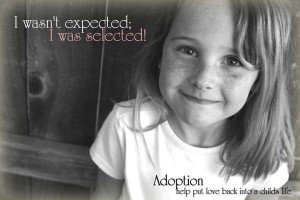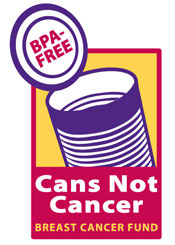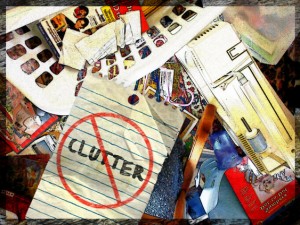Is your life lived at full audio? Many adults in the US, those of parenting age, are running full on each day, barely able to get the “to do” list done when it includes work, family, home and all those school activities. I have to admit that we’ve cut back on the “running” to focus on the quality of education our daughter receives, and interaction with each other – golf, movies, family dinner night – than ever before. The to do list has been revamped. Why? When our world view is healthy, we are healthy too.
I have to admit this commitment to being a parent and person comes at a price. We’re becoming licensed as an adoptive home for a sibling group whom we want to be joined with forever – raising our total kiddo count to 8 children and now three grandkids. Still, the state doesn’t have children for adoption because they were well taken care of – they’ve been hurt. I understand hurt in ways that most people don’t. That, to me, redeems the time that I spent in pain.
 Alison, you say, how are you going to be an adoptive parent, finish your PhD, write all three books under contract, be a great wife and housekeeper…can it be done? Dunno. Ask myself the same question all of the time. I only know that I cannot live my life in survival mode. If I’ve learned anything in the last two years, it’s not to take life for granted. I will not live by “should” and “must,” but instead a symphony of reality, passion and color. So why adopt? For the past two years, I have had this vague feeling that there are little people missing in my life, that I’ve a surplus of love (and space) designed for children who need….love. Coming out of dysfunction and pain, I understand how to make a real life difference. Yep, I don’t just love being a parent. I LOVE being a parent. So much that being a stay at home Mom isn’t an option – it’s my best option. We forgo my big salary to stoke up a writing career I beleive in, and to allow me to make an amazing home for the hubster and the kids.
Alison, you say, how are you going to be an adoptive parent, finish your PhD, write all three books under contract, be a great wife and housekeeper…can it be done? Dunno. Ask myself the same question all of the time. I only know that I cannot live my life in survival mode. If I’ve learned anything in the last two years, it’s not to take life for granted. I will not live by “should” and “must,” but instead a symphony of reality, passion and color. So why adopt? For the past two years, I have had this vague feeling that there are little people missing in my life, that I’ve a surplus of love (and space) designed for children who need….love. Coming out of dysfunction and pain, I understand how to make a real life difference. Yep, I don’t just love being a parent. I LOVE being a parent. So much that being a stay at home Mom isn’t an option – it’s my best option. We forgo my big salary to stoke up a writing career I beleive in, and to allow me to make an amazing home for the hubster and the kids.
Around the Harrison House, our daughters Dayna and Jessica will be inbound this weekend for Taryn’s bouncy house ultimate kiddo birthday party; forty kids for two hours in a crazy, running outside, egg hunting and pinata bashing extravaganza. I may not make it out sane.
Then, it’s time for a round of family pictures and time together. I can’t tell you how much I love this all. If you want your family to flourish, understand that it’s in the details. How well you take care of yourself, what you do with your time, how you’re concerned about the give and take, development and function of those kids at all ages and stages of life. Children may not need a lot of guidance as young adults, but they certainly need your love and support. Details set the stage of success.
When I am taking care of home, I like to be mindful of the fact that there are to be really little one’s around in my coming days. One of our potential adoptees has just turned 4. The thought occurred to me as our beloved social worker walked our home with me last week that cupboards are a big deal. Not just that the products in them may not be safe – but what impact their residue has on developing people.
Dayna’s cupboards are all grandma and baby proof at the moment, safe in the hands of an exploring Mason. She’s an excellent Mommy. My God her father and I are so proud of she and sissy Jessica. I thought of them (Jessica is the Mom of our grandbabies London and Trace) as I prepped the house for a full onslaught of overnight campers preparty this Friday. Yes, I am going shopping for manicures and toenail polish to suit the luau on Saturday (aka birthday bash). I also took some time out to consider the following super great article that is in my stash from WebMd. Never really thought about the PVC thing – but you’re about to understand. My house is officially incorporating the following article into the landscape (the cans were no problem – I already think that they’re nasty and lazy. Ugh. Fresh veggies, please.)
By Margie Kelly and published by WebMd.com.
When it comes to getting toxic chemicals out of your home, is there any question that can’t be answered with “baking soda and vinegar”?It’s true that you can get amazingly far with the combination of the two, but even the mighty union of baking soda and vinegar can’t solve all your toxic issues.
The book “Healthy Child Healthy World” is full of advice about how to create a cleaner, greener, safer home. Using that book as my North Star, in addition to the expertise generously shared with us over the years by Healthy Child Blogger Network members, I’ve pulled together a starting list for chasing toxic chemicals out of your home.
1. Make or buy green cleaners
Baking soda and vinegar steal the spotlight in this category, and there are plenty of recipes for mixing up your own homemade green cleaner. But if you want to be able to buy something to get the job done, follow the cleaning tips from Betsy at Eco-novice.
Among my favorites are: avoid fragrance, don’t buy anything with scary warnings and danger labels, and search out products with verifiable eco labeling.
2. Cleaning isn’t disinfecting
Loads of cleaning products, personal care products, and even socks contain antibacterials, which have been added to make you believe you’ll fend off harmful bacteria by using them. It’s not true. In fact, antibacterials cause more harm than good by leading to antibiotic resistance. Soap and water gets the job done without harming the environment or creating a new generation of “super germs.”
3. Eat healthy and shop smart
Going organic is healthy and it is possible to do it without bankrupting your family. First, know which fruits and vegetables should always be organic (and avoid the Dirty Dozen) and which have the lowest amount of pesticide contamination. Dr. Alan Greene, a Healthy Child advisor, has compiled a top 10 list of foods you should buy organic, starting with milk.
CHECK OUT Seventh Generation Green and a chance to win a “Green” Make Over.
Many food and beverage cans are lined with the toxic chemical Bisphenol A (BPA), which has been linked to breast cancer and other health concerns. Avoid cans to reduce your kids’ exposure to the chemical, as they are more vulnerable to the effects of hormone-disrupters like BPA. As more companies bring BPA-free cans onto the market, keep your eyes open for BPA-free cans on store shelves and stay up to date on the issue by connecting with the Breast Cancer Fund’s Cans not Cancer campaign.
5. Stay beautiful without chemicals
Personal care products, like shampoo, makeup, and lotions may contain toxic chemicals that have been linked to reproductive harm, cancer, and skin irritation. Avoid parabens in lotions and antibacterials, like trichlosan, a carcinogen that shows up in toothpaste (yuck). EWG’s Skin Deep website makes it easier for you to find products that are safer for you. Also check out Story of Cosmetics to get the big picture of the problem and the Campaign for Safe Cosmetics so you can learn which lipsticks have lead and why it’s always smart to skip fragrances.
6. Just say no to PVC
PVC is the worst of the plastics, made with toxic chemicals, including lead. PVC is identified by the #3 on the bottom and that “vinyl shower curtain smell,” which is the result of toxic chemicals called phthalates off-gassing into your home. Unless you make a point to avoid PVC, you’ll inadvertently fill your house with the toxic stuff, as it is ubiquitous and found in plastic food wrap, soft squeeze toys, wallpaper, flooring, and more. PVC is toxic, can’t be recycled, and is often the material of cheap, disposable toys that you don’t want in your kid sucking on or keeping in his or her toybox. Avoiding PVC is good for workers, your family, and the planet.
7. Ban pesticides from your home and yard
Pesticides are poisons and, in most cases, their negative effects outweigh any short-term gain. Pesticides have been linked to a range of health problems, including asthma, hyperactivity and behavior problems, cancer, learning disabilities, reproductive disorders, and compromised brain development. Food storage solutions and good sanitation is the first step to preventing pests from entering your home. Removing your shoes at the door will prevent you from tracking in pesticides and other dirt from the yard and walkways into your living space. Instead of using herbicides on your lawn, yank weeds early, and use mulch to block weed growth. Use natural fertilizers and plants that bugs don’t like (like marigolds) to help keep pests out of your garden.
8. Commit to buying and using less stuff !
Buy and use less stuff! The simple act of bringing a bag to the grocery store and using a refillable coffee mug or water bottle pays back great dividends and sets a good example for your kids. Do your best to avoid buying “throw-away” or single-use items. Invest in products and materials that will last; it saves trees, water, and money.
Remember: no one expects anyone to do everything on this list every day. My favorite Healthy Child motto is “No one can do everything but everyone can do something.” Take it a step at a time and let us know what works best for you and your family.


